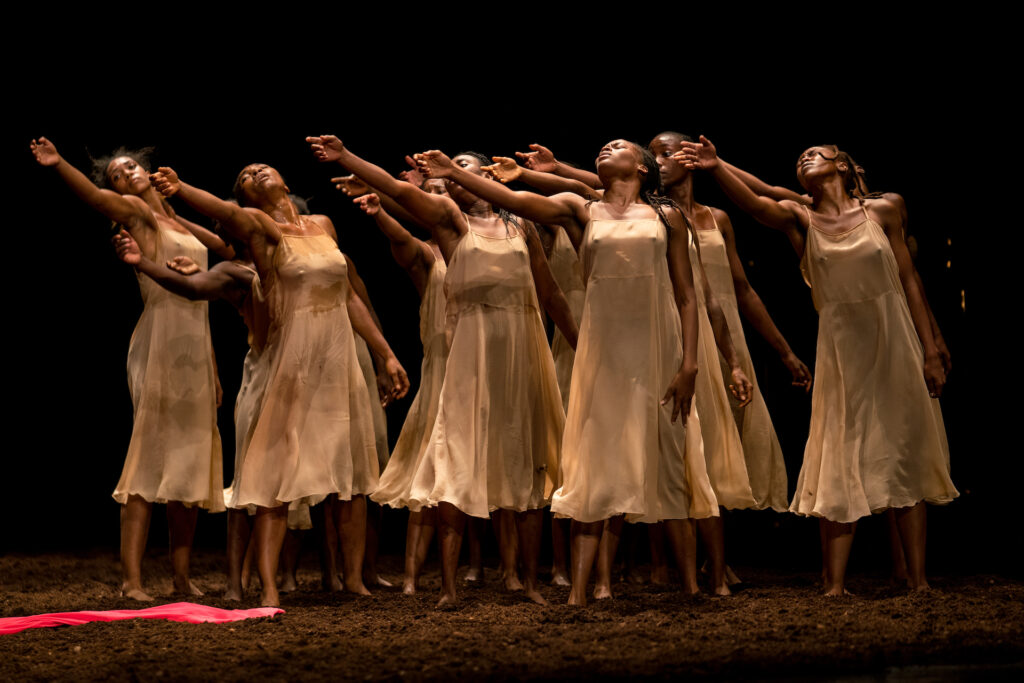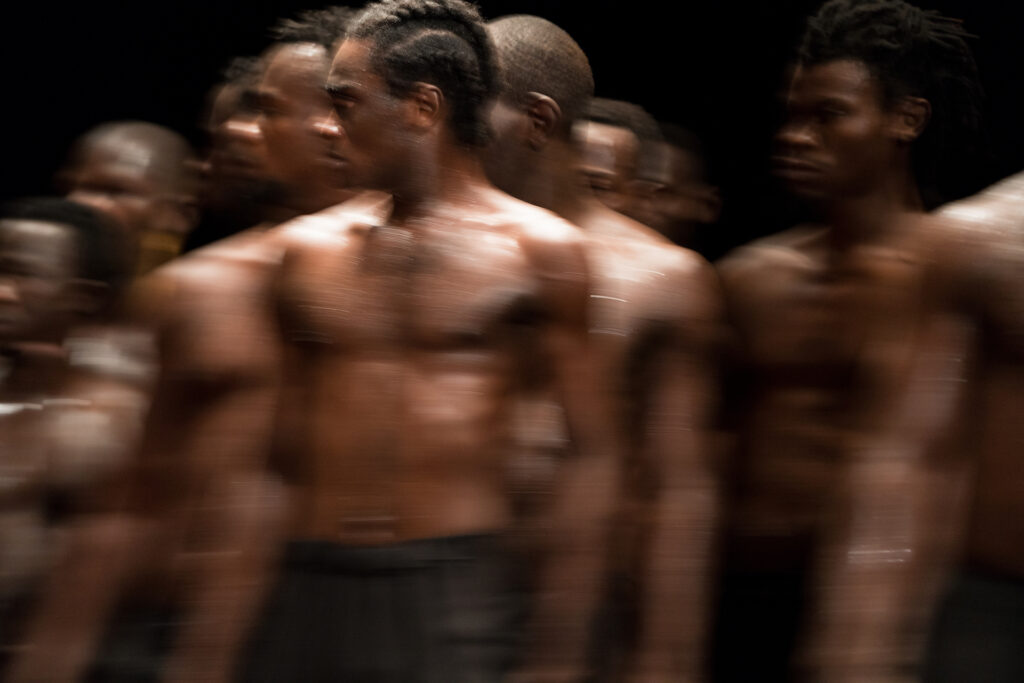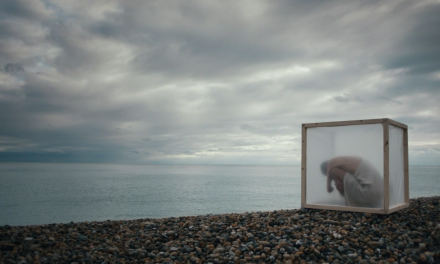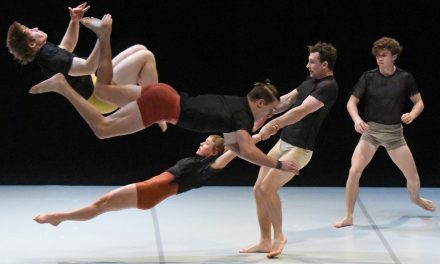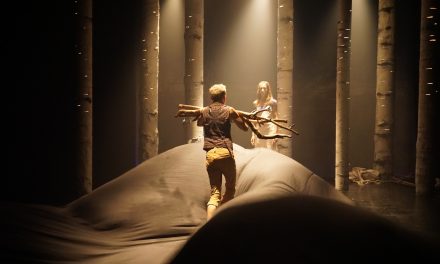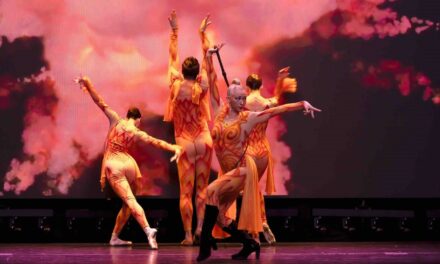The 2024 Season of Glorya Kaufman Presents Dance at the Music Center opened to much excitement on February 8 through the 11, 2024. Long lines of dancers and dance fans waited for tickets that would introduce Los Angeles to this historic retelling of Pina Bausch’s Seminal piece, The Rite of Spring. The co-production by the Pina Bausch Foundation, École des Sables and Sadler’s Wells pulled together this long awaited production’s arrival (since before the Pandemic).
This new and astounding project recruited 38 dancers (out of 200 auditioned) hailing from 13 African countries, including Benin, Burkina Faso, Côte D’Ivoire, Democratic Republic of the Congo, Ghana, Kenya, Madagascar, Mali, Mozambique, Nigeria, Senegal, South Africa and Togo. This was noteworthy since “Rite” had only been done by European Ballet companies and Bausch’s Tanstheater Wuppertal.
The initial offering of the double bill, “common ground[s]” was encouraged perhaps to add well deserved accolades to the spirits of this remarkable project. The protagonists of the piece were Germaine Acogny and Malou Airaudo, both organically connected to “Rite” in two different ways. Airaudo, a former member of Ballet Russes de Monte Carlo, worked with Léonide Massine, and in 1973 became a member of Tanztheater Wuppertal Pina Bausch, often performing the role of Rite’s “Chosen One”. Partnering with her, was the commanding Acogny, called the Mother of African contemporary dance, the founder of L École de Sables in Toubab Dialaw, Senegal and well known as “a force in the world of African Dance,” who was well aware that Rites needed to be done from the cradle of civilization, Africa. Common ground[s] explored the relationship of these two iconic divas, allowing the audience to be voyeurs in the exploration of their association. As beautifully lit and dressed was this addition, it was over long and lacked additional insights into their meeting. The stage craft is luxurious with the light of dusk, designed by Zeynep Kepekli. The composer Fabrice Bouillon’s music, haunting, yet forgettable. The piece takes its time, a kind of tapestry of economy, without the addition of new information. The costumes, designed by Petra Leidner, drape the females in simple black, revealing their faces, necks, shoulders, backs and hands. Not so evident is the work of Sophiatou Kossoko, the dramaturg, which simply lulls us into a kind of 30 minute meditation that quietly fades to its ending, watching as the acquaintances glide off into the darkness.After the black out, work lights on, a fascinating 30-minute reconstruction ensues as the stage is transformed into the African plains right before our eyes and the peat-mossed Serengeti is revealed as working lights fade.
In the dark, the strains of the bassoon announcing the coming of Spring in Igor Stravinsky’s now notable music of Diaghilev and Nijinsky’s 1913 version which caused a riot at the time. It now challenged this 21st century gem to match Stravinsky’s brilliance… And match it does, when the slow rise of dawn reveals the sleeping form of a young girl in a wheat colored slip. As the town of dancers gather, young women in simple slips, bare-chested men in black pants, brown bodies glistening, as the men separate from the women. Like an impending tornado, they configure in circles and lines, bodies quaking from expectation.
Then it begins, the incessant beating and the power of the primal movements take over. It carries the dancers. Every movement comes from the very essence of life. As the piece grows with each gathering and separation, every circle every line is alive with culture, tradition, and heritage. So deeply honest, the intelligence, the love, the grace so powerful, that it becomes a transcendency that allows for revelation.
The Artistic Directors, Josephine Ann Endicott, Jorge Puerto, Armento, and Clémentine Deluy, along with the Rehearsal Directors, Çoğdaş Ermiş, Ditta Miranda Jasjfi, Barbara Kaufmann, Julie Shanahan, and Kenji Takaji who restaged this miracle, brings Bausch’s brilliance to understanding, giving space for each dancer to take it further and contribute their personal heritage, community, and passions. The essence of collaboration and… Genius.
Even though the sacrificial story is known, when the whirlwind of trading the red cloth from one girl to the other… gathers, stops and tacitly reveals a young woman standing dressed in red, pure shock and grief comes over us. Her dance of death, stunning, leaving all others in speechless anguish as the music of death becomes her partner til the end.
Pina Bausch’s Rite of Spring is a gift one can never forget. It goes without saying that art such as this comes not often. There’s so many to thank for their selfless contribution to this, that goes without saying. But one must experience and value this as a living work of art to live and learn from. Collective gratitude to all who made this possible.
To learn more about the Glorya Kaufman Presents Dance at The Music Center, please visit their website.
To find out more about the Pina Bausch Foundation, please visit their website.
For more information about École des Sables, please visit their website.
Written by Joanne DiVito for LA Dance Chronicle.
Featured image: Pina Bausch’s Rite of Spring – Photo by Maarten Vanden Abeele.

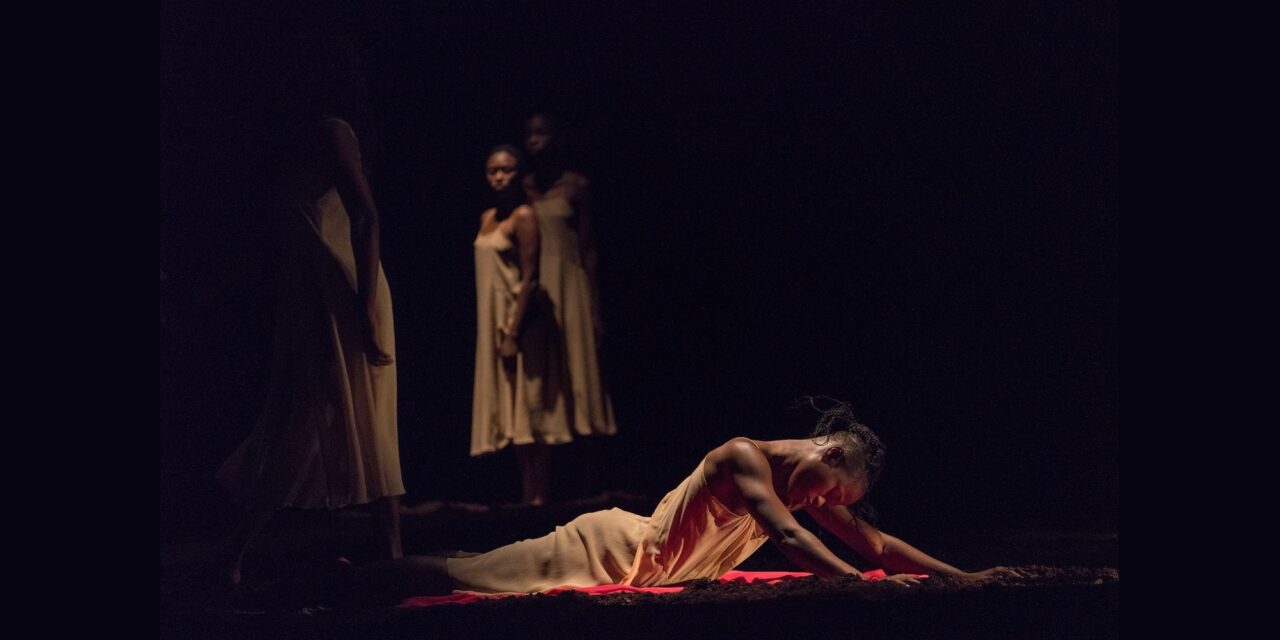
!["common-ground[s]" - Photo by Maarten Vanden Abeele](https://www.ladancechronicle.com/wp-content/uploads/2023/12/common-ground-s-credit-maarten-vanden-abeele-004-1024x684.jpg)
!["common-ground[s]" - Photo by Maarten Vanden Abeele](https://www.ladancechronicle.com/wp-content/uploads/2023/12/common-ground-s-credit-maarten-vanden-abeele-003-1024x684.jpg)
